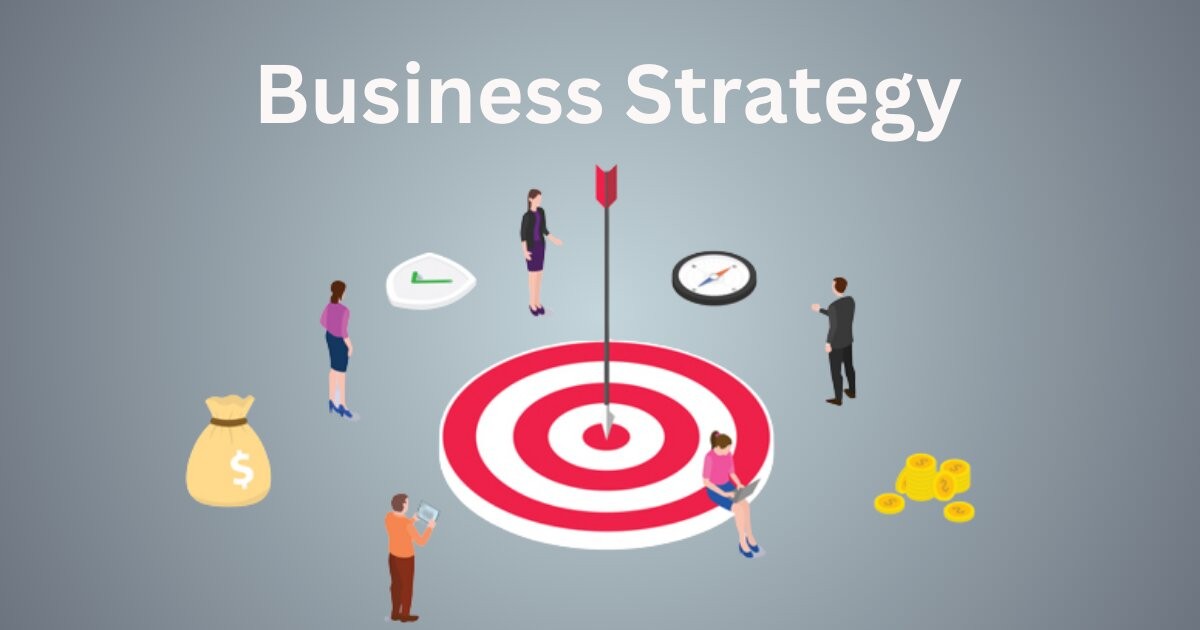In the competitive world of business, a well-defined strategy is crucial for navigating challenges, seizing opportunities, and achieving long-term success. A business strategy outlines your company’s goals, defines how to reach them, and ensures that all efforts align with your vision. Whether you’re launching a startup or managing an established company, understanding and developing a robust business strategy can set the foundation for sustainable growth. In this blog, we’ll explore the essential components of a successful business strategy and provide actionable insights to help you craft one for your organization.
What is a Business Strategy?
A business strategy is a comprehensive plan that outlines how a company will achieve its long-term goals and objectives. It involves setting priorities, focusing resources, and making decisions that align with the company’s mission and vision. A solid strategy helps businesses navigate the competitive landscape, adapt to market changes, and drive growth.
Key Components of a Business Strategy
- Vision and Mission Statements
- Vision Statement: Defines the long-term aspirations and desired future state of the company. It provides direction and inspiration.
- Mission Statement: Outlines the company’s purpose, core values, and primary objectives. It explains why the company exists and what it aims to achieve.
- Market Analysis
- Industry Trends: Understand the current trends, opportunities, and threats within your industry.
- Competitive Analysis: Evaluate your competitors’ strengths, weaknesses, and market positioning.
- Target Audience: Identify and analyze your target customers, their needs, preferences, and behaviors.
- Strategic Goals and Objectives
- Long-Term Goals: Set broad, overarching goals that align with your vision and mission.
- Short-Term Objectives: Define specific, measurable, achievable, relevant, and time-bound (SMART) objectives to track progress and drive performance.
- Value Proposition
- Unique Selling Proposition (USP): Determine what sets your products or services apart from competitors and why customers should choose you.
- Customer Benefits: Clearly articulate the benefits and value that your offerings provide to your target audience.
- Competitive Advantage
- Differentiation: Identify how you will differentiate your business from competitors through product features, quality, customer service, or pricing.
- Cost Leadership: Explore strategies to achieve a cost advantage, allowing you to offer competitive pricing while maintaining profitability.
- Strategic Initiatives
- Action Plans: Develop detailed plans outlining the actions and resources required to achieve your strategic goals.
- Resource Allocation: Determine how to allocate resources, including financial, human, and technological, to support your strategic initiatives.
- Performance Metrics
- Key Performance Indicators (KPIs): Establish metrics to measure progress and success. KPIs should align with your strategic goals and provide actionable insights.
- Regular Review: Implement a system for regularly reviewing and assessing performance against your objectives.
Steps to Develop a Successful Business Strategy
- Conduct a SWOT Analysis
- Strengths: Identify your company’s internal strengths, such as unique skills, resources, or technologies.
- Weaknesses: Recognize areas of improvement or challenges that need to be addressed.
- Opportunities: Explore external opportunities that could benefit your business, such as emerging markets or industry trends.
- Threats: Assess potential threats that could impact your business, such as economic downturns or competitive pressures.
- Define Your Strategic Vision and Mission
- Craft Clear Statements: Develop a compelling vision and mission statement that reflects your company’s purpose and aspirations.
- Communicate Effectively: Ensure that these statements are communicated clearly throughout the organization to align and motivate your team.
- Analyze Market and Competitive Landscape
- Gather Data: Collect data on industry trends, customer preferences, and competitor activities.
- Identify Gaps: Look for gaps in the market or areas where you can capitalize on unmet needs.
- Set SMART Goals and Objectives
- Be Specific: Define clear and specific goals that align with your vision and mission.
- Measure Progress: Ensure that goals are measurable and set deadlines for achieving them.
- Develop and Implement Strategic Initiatives
- Create Action Plans: Outline detailed action plans for each strategic initiative, including timelines and responsibilities.
- Allocate Resources: Allocate the necessary resources to execute your plans effectively.
- Monitor and Adjust
- Track Performance: Regularly monitor performance against KPIs and objectives.
- Adapt and Refine: Be prepared to adapt and refine your strategy based on performance data, market changes, and new opportunities.
Common Pitfalls to Avoid
- Lack of Focus: Avoid spreading resources too thin. Focus on key areas that align with your strategic goals and provide the most significant impact.
- Inflexibility: Be prepared to adjust your strategy in response to changing market conditions, new information, or unexpected challenges.
- Ignoring Competitors: Stay aware of your competitors’ activities and strategies. Continuously assess your competitive advantage to maintain relevance.
- Poor Communication: Ensure that your strategy is communicated effectively throughout the organization. All team members should understand their roles and how they contribute to the overall strategy.
Conclusion
Crafting a successful business strategy is essential for guiding your company toward long-term success and growth. By understanding the key components, following a structured approach, and avoiding common pitfalls, you can develop a strategy that aligns with your vision, adapts to market conditions, and drives performance. Remember, a business strategy is a living document that should evolve with your organization. Regularly review and refine your strategy to ensure it remains relevant and effective in achieving your goals.
